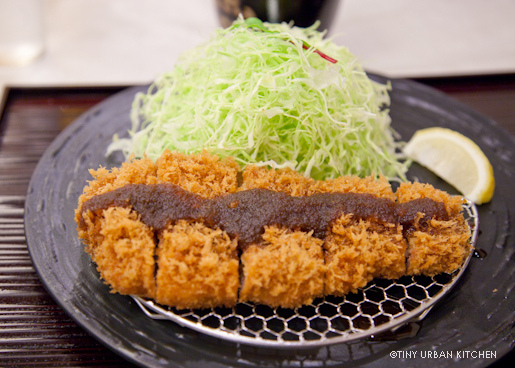
This post is part 6 of my series: Tribute to Japan. Other posts in this series include: Part 1: Kappabashi-dori, Part 2: Tapas Molecular Bar, and Part 3: Suzuran (Ramen)
Part 4: Japanese Matcha and Azuki Breads, Part 5: Masamoto Tsukiji Knives
Here in America, it's tough to truly appreciate the nuances and diversity of Japanese cuisine.
In most parts of the US, all Japanese food is lumped together in one restaurant. Sure, some of you are lucky enough to live in New York, San Francisco, or Los Angeles, where you'll actually see dedicated ramen shops, sushi restaurants, or izakayas.
For the rest of us, however, "Japanese food" connotes this general idea which is essentially a mish-mash of popular Japanese dishes - spicy tuna rolls, shrimp tempura, noodle soups, a curry dish, and inevitably your chicken or salmon teriyaki bento box. If you're lucky, you might see tonkatsu or its cousin, katsu-don on the menu.
One thing I love about visiting Japan is the opportunity to learn about (and taste!!) all different types of Japanese food at dedicated, specialty shops. For example, visit the best shabu shabu restaurant in Tokyo, and you'll receive a menu that's literally just full of different shabu items (e.g., Kobe beef . . . sooo good!). Similarly, there are scores of ramen shops, curry houses, and all sorts other shops dedicated to various narrow slices of Japanese cuisine.
One of my favorites? Tonkatsu.
Surprised? Indeed, there are many dedicated tonkatsu restaurants in Japan.
Tonkatsu is a breaded and deep fried pork cutlet, usually served with a thick, tangy sauce ("Tonkatsu sauce"), shredded cabbage, and miso soup. Inspired by European cuisine, it first appeared in the late 1800's in a Western-food restaurant in Ginza, Tokyo.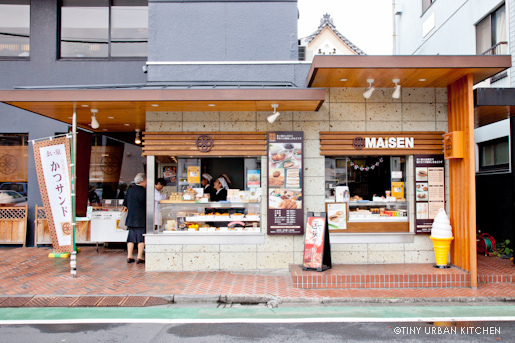
Maisen take-out counter
These days, Maisen in Tokyo is pretty universally acknowledged as one of the best tonkatsu houses in the city. Their signature dish is the kurobuta tonkatsu (literally "black pork," also known as Berkshire pork in the US). Kurobuta is known for its high fat content and intense, juicy flavor.
The restaurant is uniquely situated inside a former World War II public bathhouse. In fact, the main dining room (pictured above) was once the changing room, complete with some of the original architectural details in the high ceilings. 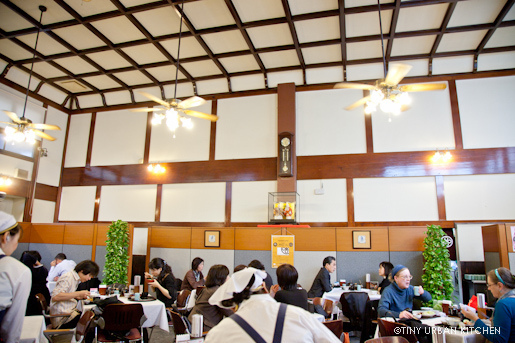
There's a simple English menu, but we could clearly tell that it only had select items on it. The Japanese language menu is an entire book which, thankfully, has a tons of pictures. Bryan and I both decided to go for the kurobuta set menu, which came at quite the hefty cost (around $35 each! - Grr . . horrible exchange rate!)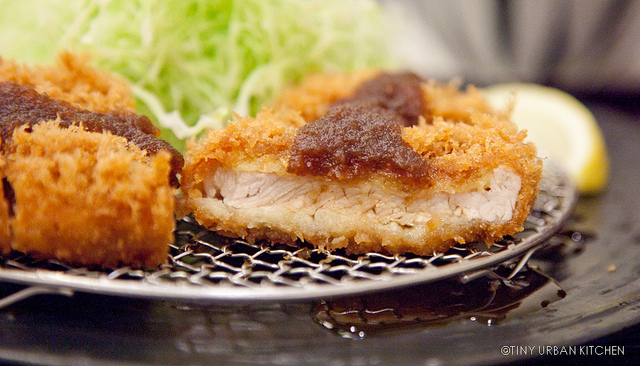
I still remember asking the server in my broken Japanese, "what's the difference between hire (fillet) and rosu (loin)?"
She smiled, "rosu has more fat."
"Which one is better?"
She smiled, "Definitely rosu."
We immediately got two orders of kurobuta rosu. 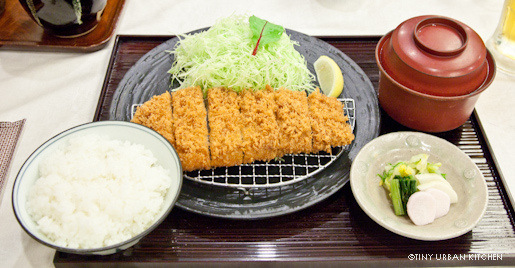
Wow.
There's no question - this is seriously by far the BEST tonkatsu I've ever had anywhere in the world. There's really no comparison. The meat is flavorful, tender, and deliciously juicy. The outer panko breaded layer has a nice crunch to it without harboring any hint of greasiness. We first visited this place in 2009 and we made sure to return this time again.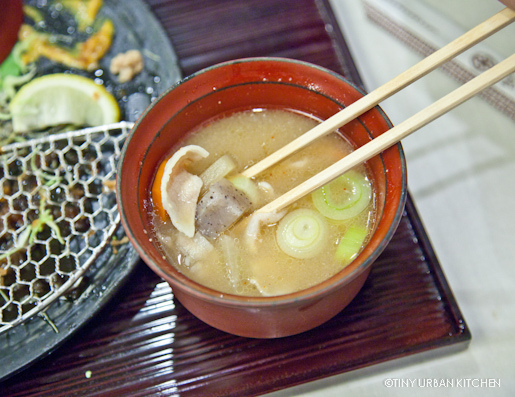
As part of the set menu, you get a nice, light miso soup (complete with konnyaku!), along with some pickles, shredded cabbage, and rice.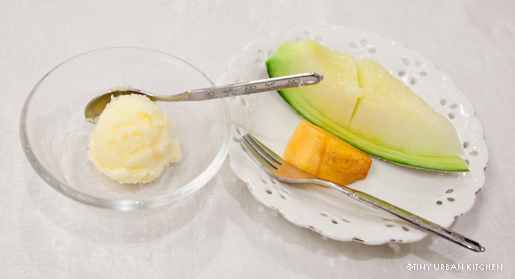
Finish off with a perfect palate cleanser of citrus sorbet and fruit.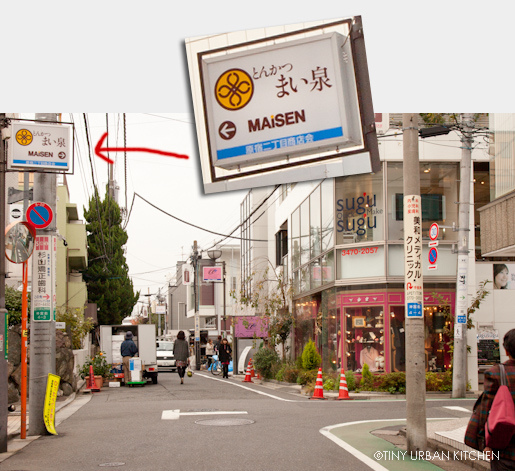
General Notes
The restaurant is pretty hard to find. It's hidden behind the Omotesando Hills shopping complex not too far from Harajuku. Thankfully, there are several signs that point you through the meandering backroads which eventually lead to the restaurant. I'd recommend bringing a map or taking a taxi! [In either event, definitely spend some time exploring both Omotesando and nearby Harajuku by foot!}
We were staying in Shibuya, so we actually walked here. 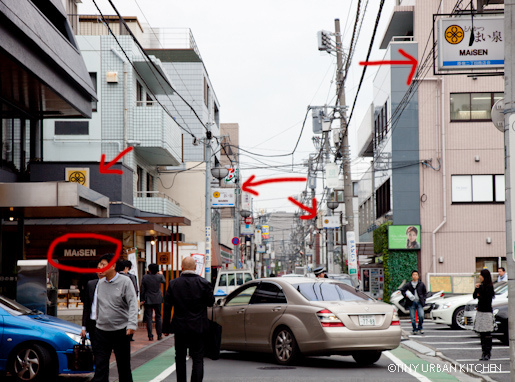
Just follow the yellow, circular signs!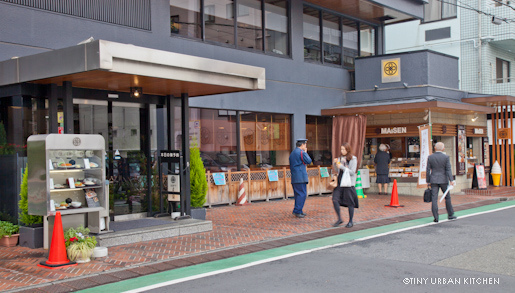
Definitely check out this place if you like tonkatsu. Not only is the food unbelievably delicious, you get to experience a bit of history by dining inside of a WWII public bathhouse. It's conveniently close to Harajuku, Omotesando, and Shibuya, which are must-visit destinations in Tokyo anyway, so why not stop by for a meal while you're there?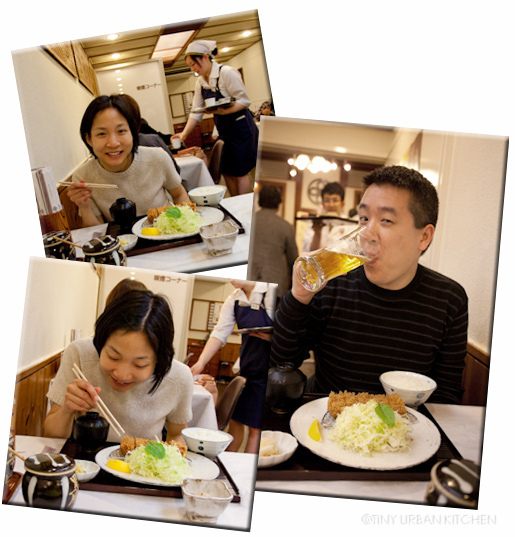
Maisen
4-8-5 Jingumae
Shibuya-ku
Tokyo
Phone: 03/3470-0071
Related Posts
All Rights Reserved

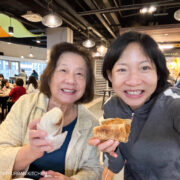
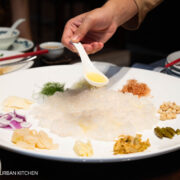
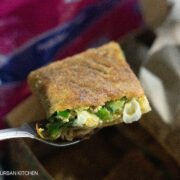
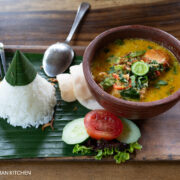
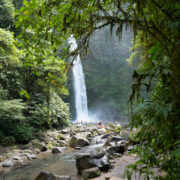
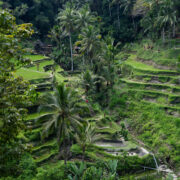
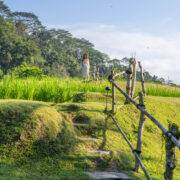
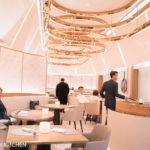
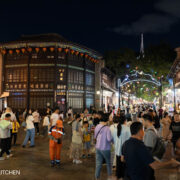
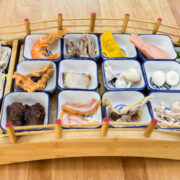
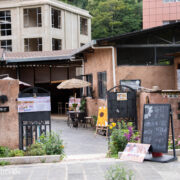
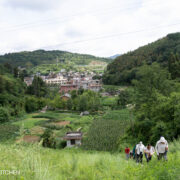
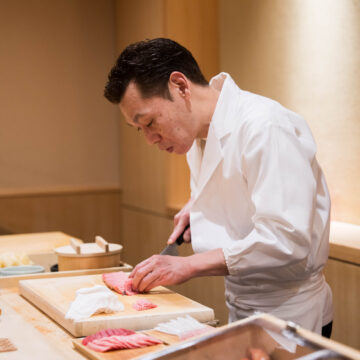
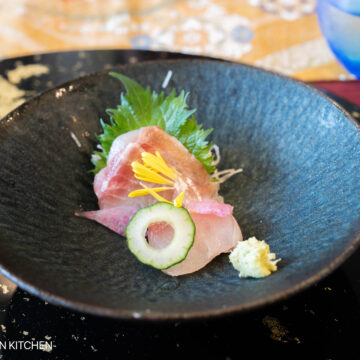
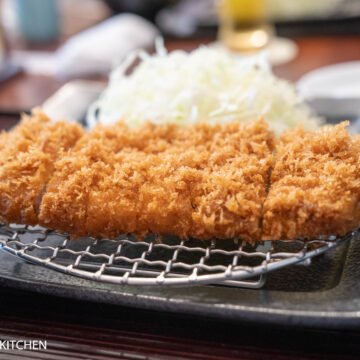
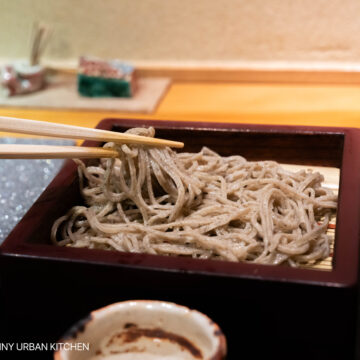
[…] a lot of recognition lately. I’ll share my whole meal here in a separate post. We sampled Maisen‘s famous tonkatsu deep fried pork cutlet sandwich for lunch one day, and enjoyed a […]